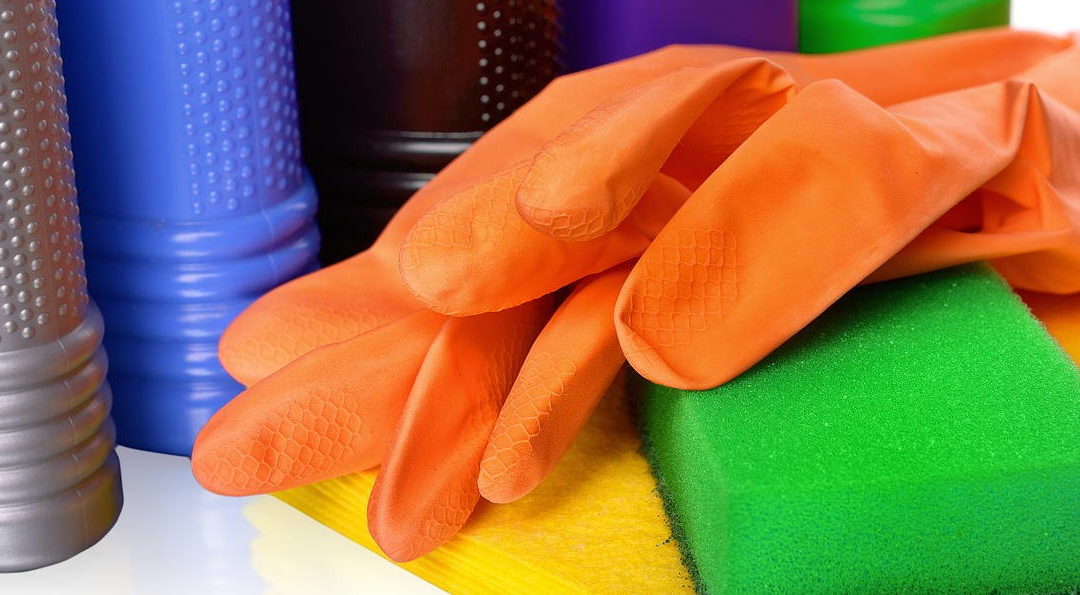Laundry detergent can help remove some stains and make clothes smell fresh again, but doesn’t necessarily disinfect the fabric. If you’re looking for ways to can enhance the washing experience without using bleach or risking skin irritation wearing the clothes afterward, here are some things you can try.
You can add white vinegar.
Vinegar has disinfecting qualities. It’s not nearly as strong as bleach in this regard, but that’s also why it’s a safer bet on clothing.
The acetic acid within white vinegar can kill viruses and bacteria, and with a half cup of vinegar added to your wash you’ll also find it does a good job of stopping odors as well.
The best part is, the white vinegar washes out completely at the end of the wash cycle, so it won’t leave a vinegar smell itself that lingers in the clothes.
For stain removal: Soak your stained clothes in white vinegar (and optionally 1 tsp of laundry detergent) for 30 minutes prior to the actual wash cycle. This will loosen stains and make them far easier to wash out. Vinegar is fairly effective at removing milder stains from wine, coffee, and fruit juice.
If your fabric is mildewed, white vinegar is also quite effective at removing it.
Avoid using vinegar on fabric with elastic.
Tea tree or lavender oils.
Both of these essential oils have are mild disinfectants and smell great to boot! If you’re just looking to make your laundry smell nice without chemicals, you can use a dropper with 10-15 drops added. Or just fill the dropper and use it all in the wash.
For the added disinfecting qualities, use 1-2 teaspoons of either oil in your wash. This can be a lot to use at once depending on what size essential oils you buy, so use judiciously if you choose to go this route.
Good ol’ hydrogen peroxide.
This common pantry or medicine cabinet item also makes a simple laundry add-in for some extra germ killing punch.
Take care, though, that hydrogen peroxide does have mild bleaching effects. This means if you use it with colors it will pull the color out of them. This is the only real limit to using peroxide in your laundry: use it only with white clothes.
Otherwise, add about 1 cup to your wash and you’ll be all set. One whole cup might seem like a lot to add for each load of laundry, but luckily hydrogen peroxide is very cheap to buy in the grocery store. (Far more affordable to keep adding to your wash than essential oils.)
Using bleach in just the right concentration.
When all else fails, you can always use bleach in your wash. You definitely want to avoid using bleach with colorful clothes.
Make sure to use chlorine bleach, however, and not Clorox-2 or Oxiclean. The latter two are oxygen-based and don’t have the same disinfecting qualities as regular bleach.
Much like peroxide, if you add just the right amount of bleach you’ll get all the germ-killing power without harsh after-smells. The bleach should wash out of the clothes at the end of the cycle, and bleach itself evaporates and becomes inert after the wash cycle. This, for many people, is sufficient to avoid skin irritation.
If you have sensitive skin, though, you may want to avoid using bleach just to make sure.
Protip: Dilute the bleach in water in a small container before adding to the laundry. This way, you aren’t pouring pure bleach onto your clothes. Bleach isn’t meant to be added directly to clothes.
Also, don’t use bleach on certain types of fabric, such as spandex, wool, or silk.
In summary for all these wash additives:
Please note that while any of these are effective ways to deal with particularly smelly, stained, or dirty clothes, they should not be something you do every load of laundry.
The concentration of vinegar, oils, or bleach needed to effectively stop bacteria and viruses can also wear the clothes out faster if used too regularly. Also, and this is really the bigger issue, the acidic nature of vinegar can wear on the rubber seals in your washing machine over time and lead to costly repairs.

